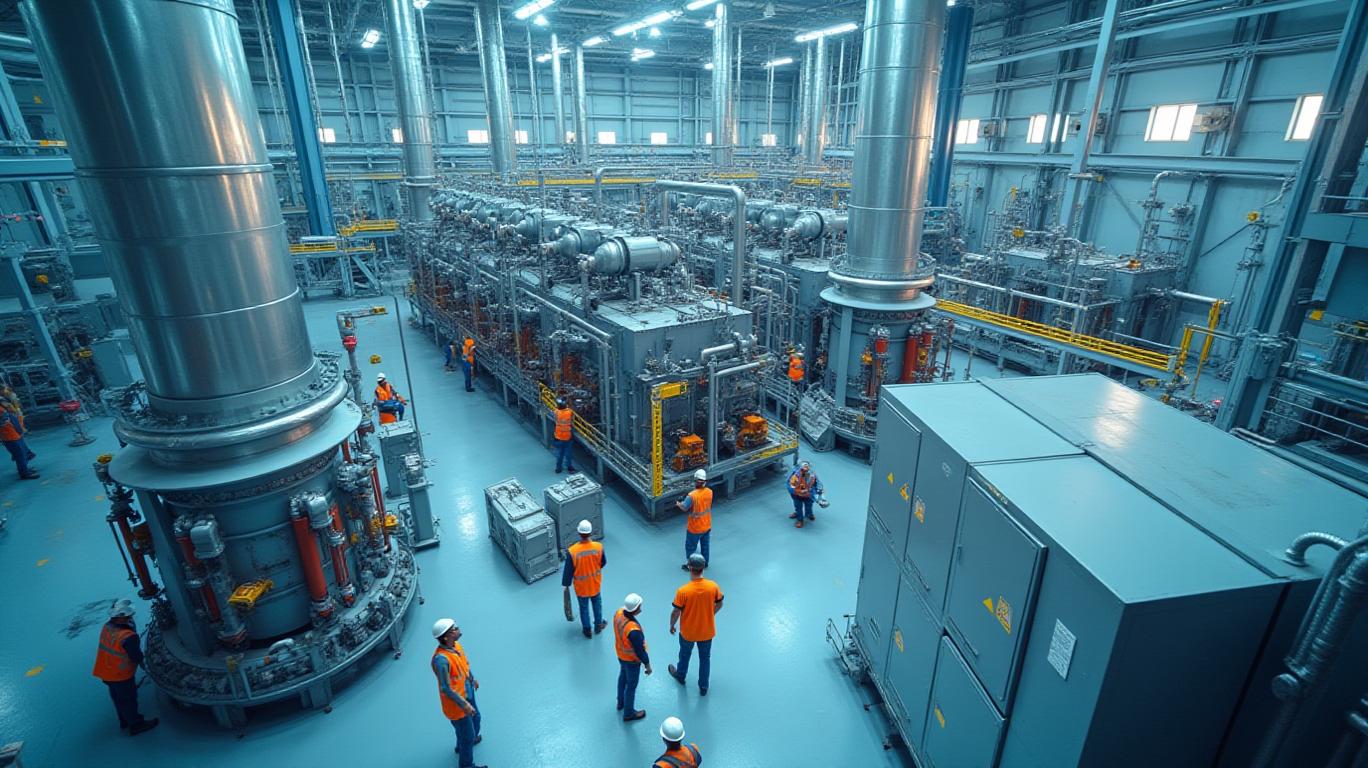PJM's 51 Project Pipeline: A Strategic Shift in Power Generation and Investment Opportunities
PJM Interconnection, the largest grid operator in the U.S., has selected 51 projects to bolster its capacity by over 9,300 MW through its Reliability Resource Initiative (RRI). This move marks a pivotal moment for the energy sector, signaling a strategic pivot toward natural gas, nuclear, and battery storage while addressing regional demand surges. The projects, set to be operational by 2031, offer investors clear entry points into sectors driving grid resilience and decarbonization.
The PJM Projects: A Blueprint for Reliability
The 51 projects, chosen from 94 applicants, prioritize natural gas uprates and new construction (7,756 MW) as the backbone of capacity additions, followed by battery storage (2,275 MW) and nuclear (1,383 MW). While coal plays a minor role (14 MW), the focus on gas and storage underscores a dual strategy: meeting immediate reliability needs while enabling cleaner energy transitions.

The geographic footprint spans 13 states and D.C., with priority given to regions facing rapid load growth, such as Northern Virginia (a data center hub) and Delaware/Maryland (high retirement rates of older plants). PJM’s “first-ready, first-served” interconnection reforms aim to fast-track these projects, reducing permitting bottlenecks and accelerating deployment.
Sector Breakdown: Where to Invest
Natural Gas Dominance
Natural gas accounts for 83% of the total energy capacity (7,756 MW) across 26 projects. This sector benefits from its cost-effectiveness and scalability, particularly for peaking plants and combined-cycle facilities.
Key plays:
- Dominion Energy (D): Operates in Virginia and North Carolina, states with high capacity needs.
- Exelon (EXC): Leverages its nuclear fleet (a complementary resource) and gas partnerships.
Battery Storage Surge
Battery projects (2,275 MW) are concentrated in high-demand zones, such as New Jersey and Illinois, where storage can stabilize grids strained by renewables. Lithium prices and supply chains will be critical to project economics.
Key plays:
- Tesla (TSLA): Battery tech leader with grid-scale products like Powerpack.
- CPS Energy (CPS): Focuses on storage projects in Texas (though outside PJM, its expertise is transferable).
Nuclear’s Role in Baseload Stability
The 1,383 MW of nuclear capacity includes uprates and new construction, critical for providing 24/7 generation.
Geographic Hotspots: Regions to Watch
PJM’s service area includes 13 states, but specific regions stand out for investment potential:
- Northern Virginia: Data center growth fuels demand, favoring proximity to generation assets.
- Delaware/Maryland: High retirement rates of coal and gas plants create opportunities for replacements.
- Ohio/Pennsylvania: Host to 29 projects (38% of total), driven by robust interconnection queues and regulatory support.
Risks and Considerations
- Gas Price Volatility: Natural gas prices could erode margins if projects rely on fixed-rate contracts.
- Storage Cost Pressures: High lithium prices or supply chain delays may slow battery deployments.
- FERC Regulatory Shifts: Ongoing debates over co-located generation (e.g., data centers paired with backup power) could reshape demand dynamics.
Conclusion: A Decisive Moment for Energy Investors
PJM’s 51 projects represent a $multi-billion opportunity to capitalize on grid modernization. The data is clear:
- Natural gas dominates the pipeline, but battery storage offers higher growth potential.
- Nuclear remains essential for baseload stability, while geographic diversity mitigates regional risks.
- With 90% of projects online by 2030, investors must act swiftly to secure positions in construction, supply chains, or equity stakes.
The PJM initiative is not just about capacity—it’s a blueprint for the energy transition. Investors who align with these projects will be positioned to profit from rising demand, regulatory tailwinds, and the inevitable shift toward a more resilient grid.
As PJM’s reforms unfold, the energy sector’s next chapter is being written—one project at a time.

Comments
No comments yet